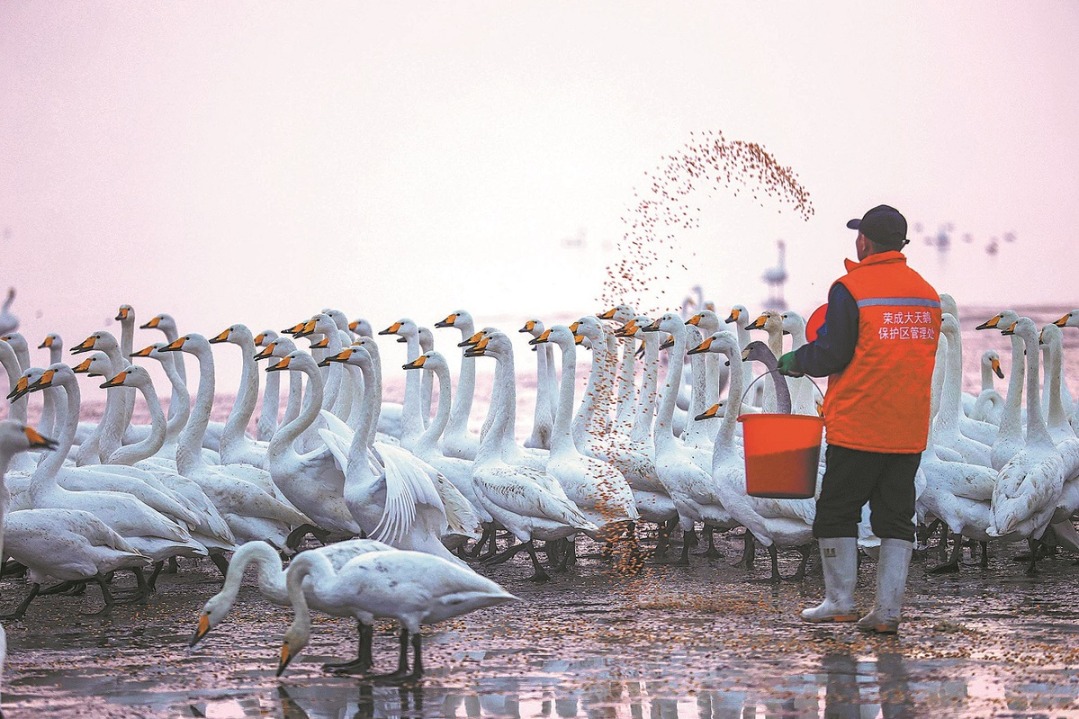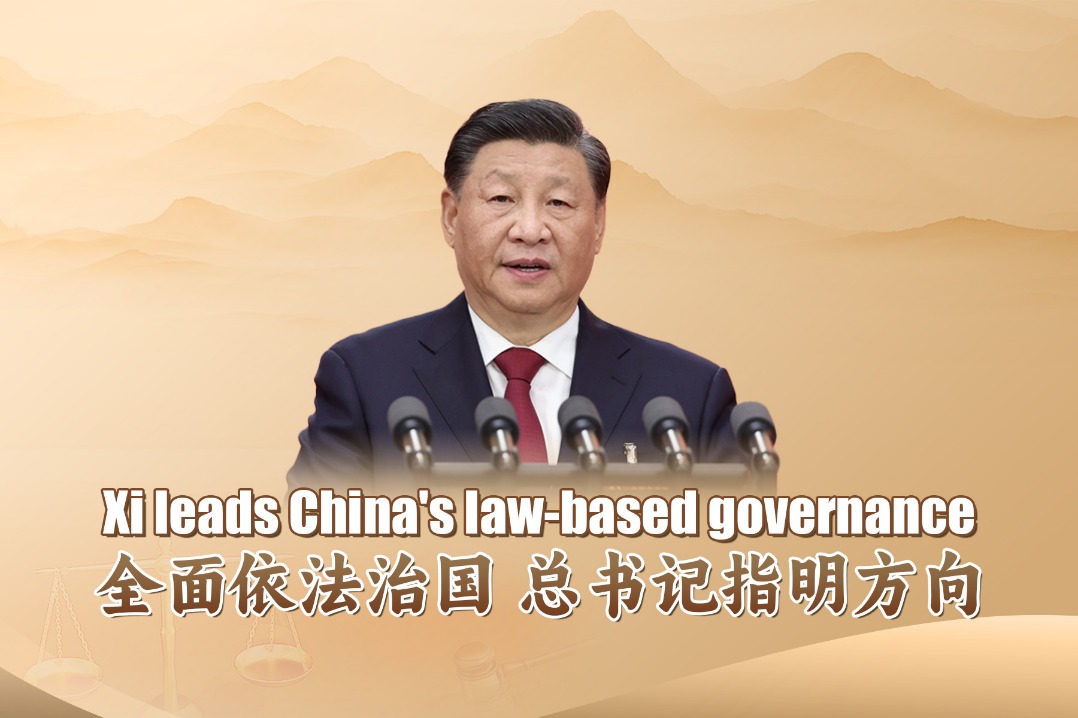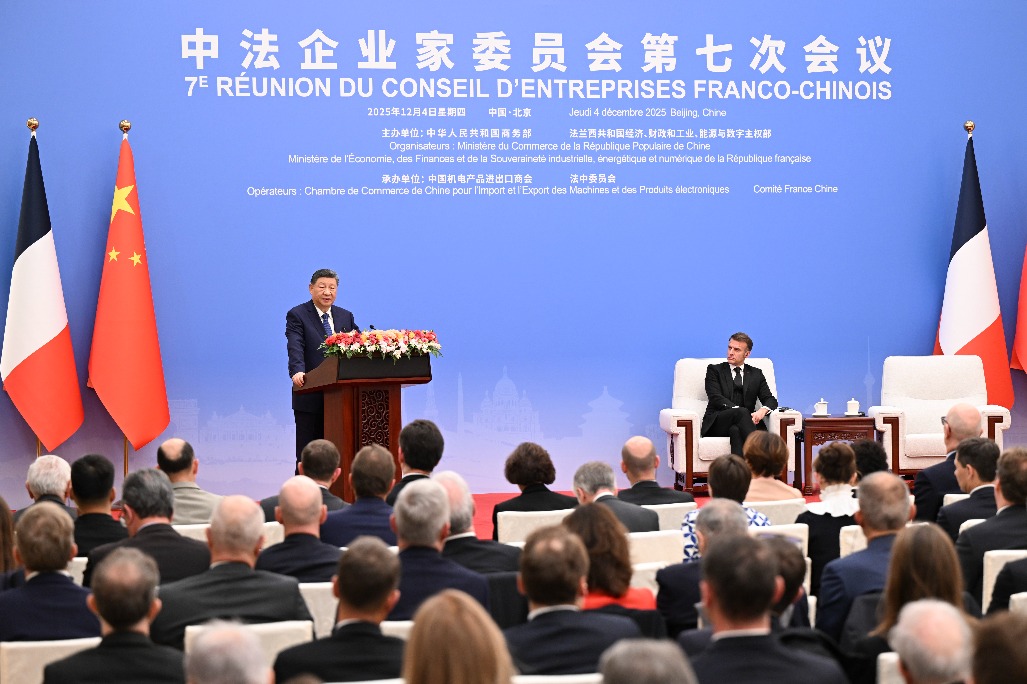China a sunny spot amid global dark clouds
By Andrew K.P. Leung | China Daily | Updated: 2023-01-12 07:29

As 2023 begins, the world remains highly uncertain and fragile, with Kristalina Georgieva, managing director of the International Monetary Fund, saying she expects one-third of the world to be in recession.
Energy and food inflationary repercussions because of the Russia-Ukraine conflict remain rampant. Cassandras are having a field day on China's perceived doom and gloom, due to its decision to end the "dynamic clearing" pandemic prevention and control policy marked by increasing Omicron infections. Diplomatic rhetoric notwithstanding, there is no let up in the United States' anti-China semiconductor stranglehold, nor is there any easing of its no-holds-barred geopolitical encirclement.
False perception of doom and gloom
As a matter of fact, Western media reports are full of images of stretched hospital wards, overflowing mortuaries and barren pharmacy shelves, a picture of panic and pandemonium.
According to Nature, a prestigious science journal, 1 million people could die in China from the sudden surge in infections, barring re-imposition of preventive restrictions. Fears have arisen about the emergence of a new variant of the novel coronavirus or subvariants of the Omicron variant. China is sharing the latest data with the World Health Organization, and while welcoming Chinese tourists, many countries are requiring internationally-recognized non-infection proof before entry.
So why do I think China is likely to be a comparatively sunny spot?
First, much misunderstood and misrepresented, the strict prevention and control policy did not mandate zero cases in all circumstances. It was used as a strategy to ensure earliest possible detection, isolation, treatment and cure. As a result, it greatly minimized deaths and prevented contagion from province to province.
According to Johns Hopkins University's analysis updated on Dec 31, 2022, China's COVID-19 mortality rate per 100,000 people stands at 1.2, compared with 331.65 for the US, 45.05 for Japan, and 38.46 for India.
It's very saddening that some senior citizens may die in the latest wave of infections, but it should be noted that there will be no significant change in China's extremely low mortality rate compared with the overall international rate.
In a way, China is a "victim" of its own success in shielding the vast majority of its population from the pandemic. As a consequence, "herd immunity" remains relatively low. While 90 percent of the population has received the first vaccination dose, only 76.6 percent of those aged 80 and above have got at least one dose, and only 40 percent have received a booster dose.
Beijing is now scrambling to vaccinate up to 90 percent of those aged 80 or above by the end of January. It is also building a database of people living with chronic diseases to maximise the rate of successful outcomes.
As the massive Chinese Lunar New Year migration starts (people returning home for Spring Festival family reunion), Beijing has asked prefecture and township officials to urgently fortify pandemic defenses, including better manning clinics, stocking medicines, medical equipment, and free "medicine kits", raising the public's medical awareness, and using official information to counter rumours.
As for some barren pharmacy shelves in some cities, they largely reflected public hysteria due to the sudden rise in infections among family members, friends and colleagues. There is a mad rush to stock up on fever medicines such as ibuprofen and paracetamol, prompting the authorities to take measures to increase the production of these two drugs by four times in a month to 202 million tablets and 190 million tablets respectively. But it should be noted that many cities have already withstood the infection peak and gradually returned to normal.
With expert input, China, the same as other countries, has realized that the COVID-19 pandemic has become an endemic disease with a much lower mortality rate, albeit it is much more contagious now. In fact, most infected people get well after a week or so. As such, initial paranoia is slowly giving way to good-humoured acceptance of widespread but mild infections.
Right time to pursue second centenary goal
With the 20th National Congress of the Communist Party of China already three months behind us, it's time to recharge our batteries and make efforts to realize China's centenary goal of becoming a modern socialist nation including achieving "common prosperity" by mid-century.
Part and parcel of the trajectory is a surging middle-income group — expected to be 800 million strong by 2035 — a vast number of which came out in droves across China to celebrate the dawning of the New Year. With more than 400 million middle-income consumers at present, China is already the world's second-largest consumer market. And since China is continuing to further open up while pivoting toward domestic consumption, it is set to become the world's largest consumer market in the coming years.
Many Chinese consumers are well-off enough to afford overseas travel, and the government has opened the borders to allow two-way flow of Chinese travellers, foreign visitors and university students.
According to an August 2021 report by Georgetown University's Centre for Security and Emerging Technology, Chinese universities are expected to produce more than 7.7 million STEM(science, technology, engineering and mathematics) graduates annually by 2025. That number will outstrip that of the US by more than three to one if international students are excluded. In this regard, China's success in building its own Tiangong space station speaks volumes about its scientific and technological capabilities.
Besides, despite US semiconductor restrictions, China is leapfrogging into next-generation photonic and quantum chips. Along with a head start in various aspects of 5G technology, big data and the internet of things, China is staying ahead of the game in harnessing the "Fourth and Fifth Industrial Revolutions". And given its ubiquitous digital economy aided by robotics and automation, aging demographics are not an insurmountable challenge for China.
Pivotal position in global economy
US-led efforts at decoupling notwithstanding, China remains at the heart of the global supply and value chains, especially in the world's largest trading bloc, the Regional Comprehensive Economic Partnership, which represents one-third of global GDP and a third of the world's population. China's pivotal position in the world economy is further entrenched with the massive Belt and Road Initiative, with railways, bridges, highways and ports linking up the region.
Even when some Chinese cities were under lockdown in October last year, some media reports, using the IMF's earlier estimate of only 4.4 percent growth, concluded that China would contribute 30 percent to global growth in 2023. Allowing for infection surges in the first quarter or so, the Economist Intelligence Unit has revised upward its forecast for China's real GDP growth from 4.7 percent to 5.2 percent in 2023. This is in stark contrast to the IMF chief's forecast of global recession.
However, the next couple of months are likely to be crucial because China still needs to keep a close eye on the epidemic since it took new rules on Jan 8. With Beijing's proven track record of massive mobilization of personnel and resources, the light of hope is right in front of us as President Xi said in his televised New Year speech.
The author is an international and independent China strategist and is a former director-general of social welfare and Hong Kong's official chief representative for the United Kingdom, Eastern Europe, Russia, Norway and Switzerland.
The views don't necessarily represent those of China Daily.
























